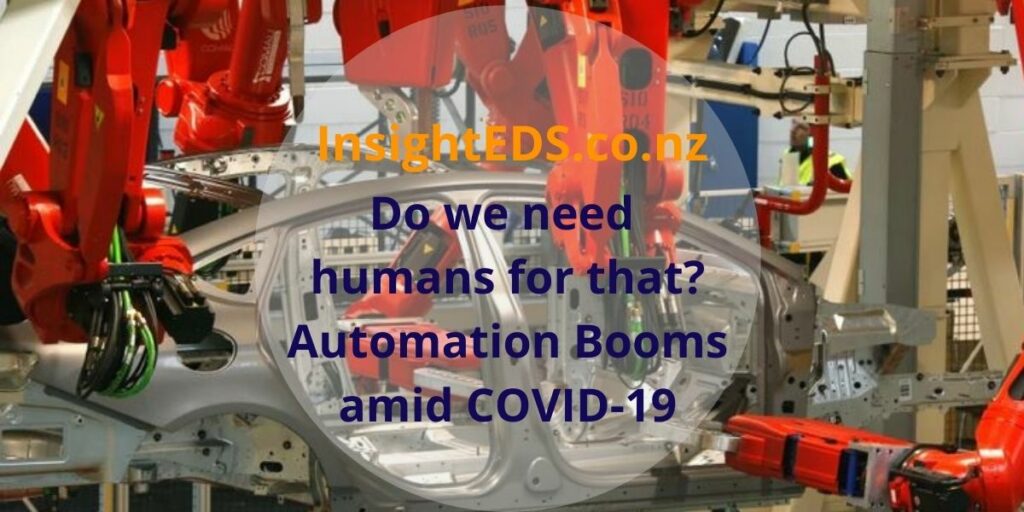
Automation Booms amid COVID 19
“It doesn’t call in sick. It doesn’t get COVID. And the reliability of it is great.” Amir Sadiki – owner of fast food franchise in California
Ask for a roast beef sandwich at an Arby’s drive-through in Inland Empire in California and you may be talking to Tori. Tori is an artificially intelligent voice assistant that will take your order and send it to the line cooks.
Faced with worker shortages and higher labor costs, companies are starting to automate service sector jobs that economists once considered safe. This was based on the assumption that machines couldn’t easily provide the human contact they believed customers would demand.
Improvements in robot technology enable machines to do many tasks that previously required people; tossing pizza dough, transporting hospital linens, inspecting gauges and sorting goods. The pandemic accelerated their adoption. Robots, after all, can’t get sick or spread disease. Nor do they request time off to handle unexpected child-care emergencies.
Economists at the International Monetary Fund found that previous pandemics had encouraged firms to invest in machines in ways that could boost productivity. This also killed low-skill jobs. “Our results suggest that the concerns about the rise of the robots amid the COVID-19 pandemic seem justified,” they wrote in a January paper.
Check out my earlier blog about Will a Robot Take your Job?
Improvements in Robotic Technology ensures Automation Booms
According to the International Federation of Robotics the fastest growth is expected in the roving machines that clean the floors of supermarkets, hospitals and warehouses. The same group also expects an uptake in sales of robots that provide shoppers with information or deliver room service orders in hotels.
Restaurants have been among the most visible robot adopters. In late August, for instance, the salad chain Sweetgreen announced it was buying kitchen robotics startup Spyce, which makes a machine that cooks up vegetables and grains and spouts them into bowls.
It’s not just robots, either — software and AI-powered services are on the rise as well. Starbucks has been automating the behind-the-scenes work of keeping track of a store’s inventory. More stores have moved to self-checkout.
The fall out on the labour market is seen to directly affect the less-educated, mainly women who disproportionately occupy the low- and mid-wage jobs most exposed to automation. Those jobs include salesclerks, administrative assistants, cashiers and aides in hospitals and those who take care of sick and elderly people.
Insight EDS keeps you up to date with breaking security technology and security news






